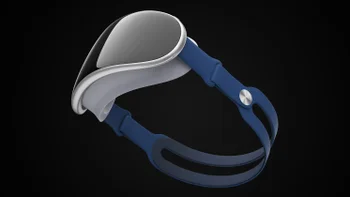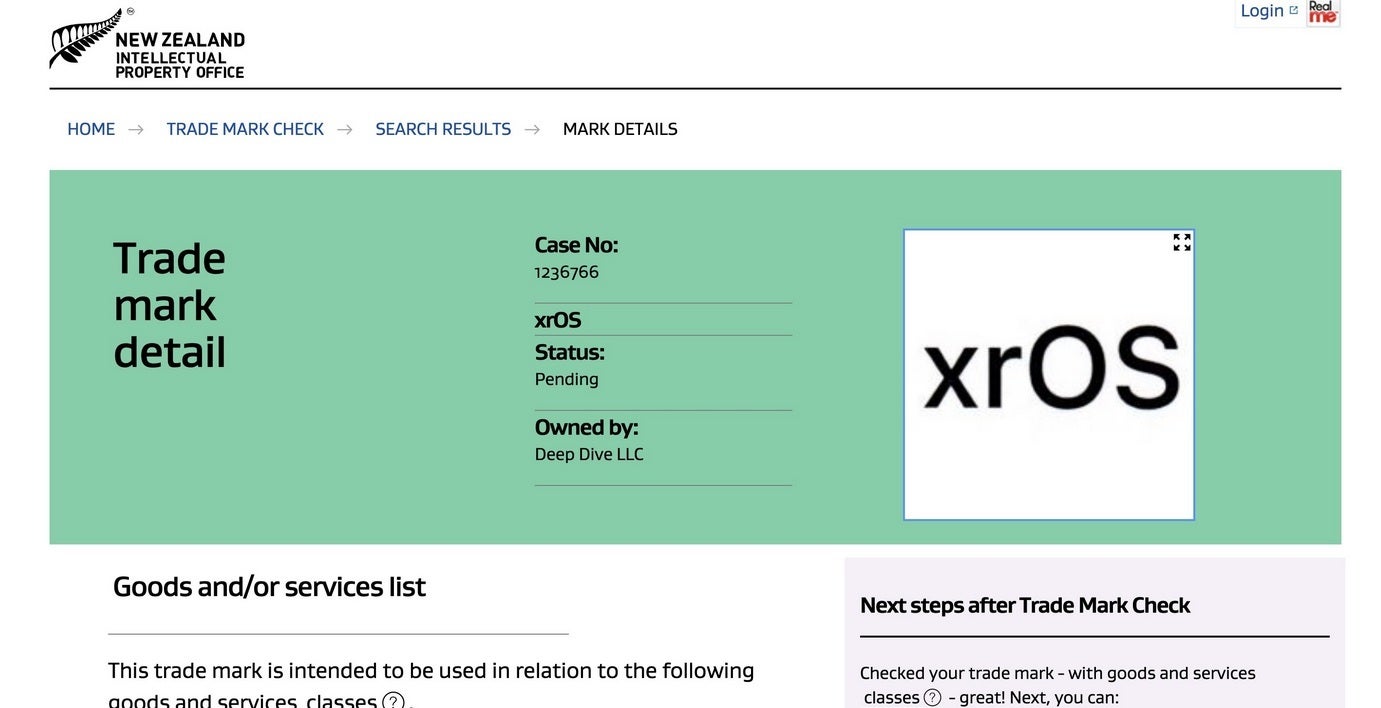Apple registers the xrOS wordmark confirming the name of its headset's operating system

The first time we mentioned Apple's reality Operating System (rOS) was back in 2017 when a huge leak revealed some information about the AR-powered Apple Glasses. This leak indicated that the specs would be powered by a 5nm chipset, carry a model number of T288, and would run rOS, At the time, there was no talk about a mixed-reality headset for Apple and the assumption was that the next big Apple device would be Apple Glasses or Apple Glass.
Once it became apparent that Apple was planning on producing a mixed-reality AR/VR headset (possibly named the Reality Pro) before developing AR spectacles, it was interesting to discover that the rOS name was still being bandied about as the name of the operating system that would drive the new product. And then last year, Bloomberg's Mark Gurman revealed that the actual name of the operating system will be Extended Reality Operating System or "xrOS."
Bloomberg's Mark Gurman was the first to break the story about the xrOS name
Gurman's sources were anonymous workers inside Apple and the use of the "Extended" term at the beginning of the name was added to indicate the headset's support for both VR and AR. Virtual Reality (VR) creates immersive environments that allow a user to feel as though he is in a situation that in real life he probably would never find himself in. For example, with VR the user could be behind the cockpit of a commercial jet as it comes in for a landing into LaGuardia.

Apple registers the xrOS wordmark
With Augmented Reality (AR), users view a real-world feed in real-time with computer-generated data layered on top of the feed. Live View on Google Maps is a good example of AR. Used to help those walking get from point "A" to point "B" safely, Live View shows the user a live feed on his phone screen sourced from a rear camera and layers computer-generated arrows on top to show the user which way to walk. Landmarks are pointed out on the screen.
Inside Apple there was a battle between the use of realityOS and xrOS
Vox Media product manager Parker Ortolani tweeted today that Apple has registered the xrOS wordmark in New Zealand via a shell company. The wordmark uses the San Francisco typeface created by Apple. The "xrOS" trademark had already been registered in New Zealand earlier this year. Last year, Apple registered the realityOS trademark and inside Apple, there was a battle between realityOS and xrOS; it seems that the xrOS name has won out.
The difference between a trademark and a word mark is that the latter uses a specific font and creates design elements that can be protected by the applicant.
Apple is expected to introduce the Reality Pro mixed-reality AR/VR headset on June 5th which is the opening day for WWDC 2023. The device is expected to be priced at $3,000 and will be powered by that 5nm chip discussed back in 2017 which we now know as the Apple M2. There should be a 4K micro-LED display for each eye, as many as 12 cameras, surround sound spatial audio, and head and eye tracking. The device will support in-air typing as one option to input data.
In some ways, the Reality Pro unveiling could mirror the 2007 introduction of the iPhone. Apple is not inventing a new product category here but hopes to be moving the headset industry several years into the future.
TF International's Ming-Chi Kuo originally expected Apple to ship 800,000 to 1.2 million units of the headset. But his expectations have dropped sharply and back in February the influential analyst said that Apple might ship only 500,000 units of the device this year. Considering the rumored price of the wearable device, Kuo's revised forecast would reduce Apple's possible revenue for the Reality Pro's first year by as much as $2.1 billion.










Things that are NOT allowed: